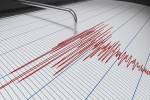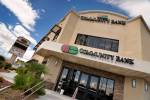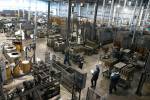Quake experts: Be prepared
RENO -- With more than 600 earthquakes of magnitude 1.0 or higher occurring just west of Reno over the past several weeks, Nevada is experiencing a vigorous seismic event, geologists and other scientists told Gov. Jim Gibbons on Tuesday.
But whether the magnitude 4.7 quake that hit late Friday, the largest so far, was the finale or a precursor to a bigger temblor, officials with the University of Nevada, Reno, could not say.
"Maybe everybody wants to hear me predict an earthquake," said John Anderson, director of the Nevada Seismological Laboratory on the UNR campus. "It's not going to happen. We are not predicting an earthquake, we cannot predict an earthquake."
The best message to residents of the Somersett and Mogul neighborhoods five miles west of downtown Reno, and residents throughout the state, is to be prepared, the officials said.
Their advice for those going through the nerve-wracking "Mogul earthquake sequence," which began Feb. 28, was to park a car in the driveway for a quick departure, secure hot water heaters and have some food and water on hand.
Because one thing is certain: A large magnitude temblor might not happen today or tomorrow or next year, but it will come. And it could hit anywhere in Nevada, including Las Vegas.
The temblors have sent goods flying off shelves, cracked walls, broken glass and collapsed part of a water flume west of Reno. No injuries have occurred.
Gibbons said the most important message in the briefing is the knowledge that we live in a seismically active environment and residents should prepare.
"At some point in the future, whether that's tomorrow or a year from now, we are going to have a magnitude 6 or 7 earthquake here, and we need to be prepared for it," he said.
Gibbons, a geologist himself, said that Nevada's many mountain ranges did not form without seismic activity, and earthquakes should not come as a surprise.
"A little preplanning, a little preparation, is going to help not only calm a lot of the fears and anxieties, but it is going to put us in a much better position to deal with events should they occur," he said.
Frank Siracusa, chief of the Nevada Division of Emergency Management, said the state is prepared to respond to an earthquake or any other emergency. Planning for such events is an ongoing process, he said.
"We're prepared," Siracusa said. "We can never be too prepared."
Anderson said Nevada is the second most seismically active state in the continental United States after California, and the frequency of earthquakes in northwestern Nevada is higher than much of the rest of the state.
Reno had a magnitude 6.1 earthquake hit on April 24, 1914.
The state averages a magnitude 7 or higher temblor every 25 years historically, but the last one of such a size, a 7.1 magnitude quake east of Fallon, occurred in 1954. So the flurry of activity comes as no surprise to scientists.
"There's somewhat of an appearance it may be tapering off a little bit," Anderson said of the Mogul swarm. "We don't draw any comfort from that because it's done it before. We just don't know."
Craig dePolo, with the UNR Nevada Bureau of Mines and Geology, said scientists do not know precisely why the swarm of quakes is occurring.
"We don't know what is going to happen," he said. "I've been through a lot of earthquakes right now, and I'm a little nervous."
But residents can expect more aftershocks even if the shaking is on the decline, dePolo said.
State geologist Jon Price said Nevada is riddled with earthquake faults, which run alongside just about every mountain range in the state.
"The big picture is, we have an earthquake hazard throughout the state," he said. "We have seen in the geological past magnitude 6.5, 7 earthquakes pretty much everywhere through the state."
Anderson said though Las Vegas has seen only a handful of magnitude 5 to 6 quakes in the recent historical record, residents should not be complacent.
"We know there are active faults in the Las Vegas region," he said. "There is a system of faults that run right through the valley."
The other reason for not ignoring the potential is because of high seismic activity nearby, such as in Death Valley, Anderson said.
"You are close enough to Death Valley to have strong shaking from an earthquake there," he said.
Contact Review-Journal Capital Bureau reporter Sean Whaley at swhaley@reviewjournal.com or 775- 687-3900.
By SEAN WHALEY
REVIEW-JOURNAL CAPITAL BUREAU
RENO -- With more than 600 earthquakes of a magnitude 1.0 or higher occurring just west of here over the past several weeks, Nevada is experiencing a vigorous seismic event, geologists and other scientists told Gov. Jim Gibbons on Tuesday.
But whether the 4.7 quake that hit late Friday -- the largest so far -- was the finale or a precursor to a bigger temblor, officials with the University of Nevada, Reno, could not say.
"Maybe everybody wants to hear me predict an earthquake," said John Anderson, director of the Nevada Seismological Laboratory on the UNR campus. "It's not going to happen. We are not predicting an earthquake, we cannot predict an earthquake."
The best message to residents of the Somersett and Mogul neighborhoods five miles west of downtown Reno, as well as residents throughout the state, is to be prepared, the officials said.
ON THE WEB UNR Seismological Laboratory U.S. Geological Survey

























